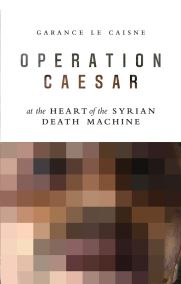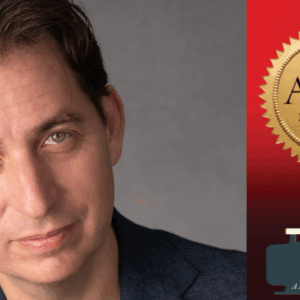
The Photographer Who Recorded Assad's Torture
How One Man Risked His Life For Justice in Syria
Caesar
“I am Caesar. I used to work for the Syrian regime. I was a photographer with the military police in Damascus. I will describe my work before the Revolution and during the first two years of the Revolution. But I can’t include everything, because I am scared that the regime might be able to identify me by the details that I divulge. I escaped to Europe. I am afraid that they will find me and eliminate me, or subject my family to reprisals.
“Before the Revolution, my job was to take photographs of crime and accident scenes that involved the military. These might be suicides, drownings, road accidents, house fires. In the military hierarchy our work was largely overlooked; we didn’t really count.
“One day, a colleague told me we were to photograph some civilian bodies. He had just been to photograph the corpses of protestors in the province of Deraa: It was in the first few weeks of the Revolution, in March or April 2011. In tears, he told me: ‘The soldiers desecrated the bodies. They were stamping on them with their boots and shouting “sons of whores!”’
“My colleague didn’t want to go back, he was afraid. When it was my turn to go, I saw for myself. The officers were describing them as ‘terrorists.’ But they weren’t, they were simply protestors. The bodies were being kept in the morgue at Tishreen military hospital, a hospital not far from military police headquarters.
“At first, the person’s name was attached to their body. After a while, maybe a few weeks or a month, the bodies didn’t have names any more. Just numbers.
“When they arrived at the hospital, the bodies had two numbers attached to them. These were written on Scotch tape or marked in felt-tip on their skin, on their forehead or chest. The tape was not of good quality and often peeled off. The first was the number of the prisoner himself, the second referred to the branch of the intelligence services where he had been imprisoned. The medical examiner would come early in the morning and assign a third number to them, relating to his medical report. This number was the most important one for our records. The medical examiner wrote the medical number on a piece of cardboard. He or a security services agent would hold this up next to the body as we photographed it. It is their hands that you see on the photos I smuggled out.
“The medical examiners were our superiors. We weren’t allowed to speak, never mind ask questions. When one of them gave us an order, we had to obey. They would say: ‘Photograph these bodies, numbers 1 to 30, for example, then you can go.’
“The bodies were grouped according to the branches. For example, there was one place for Branch 215 of military intelligence, another for Air Force intelligence. This made it easier to take the photographs and classify them later.
“In the Syria of Assad Senior and Junior there were certain things you didn’t talk about, things you didn’t dare criticize even in a whisper to your friends and family.”
“I had never seen this before. Before the Revolution, the regime would torture people to extract information. Now they were simply torturing people to death. I saw the candle burns. Once I saw a round mark made by an electric element—the sort you use to heat up tea—which had been used to burn someone’s face and hair. Some people had deep knife wounds, eyeballs ripped out, broken teeth, whip marks from car jump leads. There were bruises filled with pus, as if they had not been tended for a long time and had got infected. Sometimes, the bodies were covered in blood, and the blood was still fresh. That meant that they had died recently.
“I had to take breaks so that I wouldn’t start crying. I would go off and wash my face. I was no better at home. I had changed. I’m normally quite calm, but I would fly off the handle with my parents, my brothers and my sisters. I was simply terrified. The things I had seen during the day would pass before my eyes. I could picture my brothers and sisters as one of those corpses. It made me ill.”
Sami
One evening in spring 2011, Caesar went to see Sami. He was very agitated. In Sami’s living room he whispered:
“I have to tell you about some weird things that are happening at work. I’ve seen bodies that have been tortured. They didn’t die of natural causes. And there are more and more of them every day.” In tears, Caesar asked imploringly: “What should I do?”
The families of Caesar and Sami had known each other for more than 20 years. But in the Syria of Assad Senior and Junior there were certain things you didn’t talk about, things you didn’t dare criticize even in a whisper to your friends and family. The cult of the president, the suppression of all political opposition, the complete absence of freedom, the intelligence services, who monitor every detail of citizens’ lives, who control every corner of the city. One word out of place could land you in jail.
Sami was a construction engineer in Damascus. He knew that Caesar had been posted to an office of the military police where they photograph road accidents and military deaths. Sami had always taken just a mild interest. Until he was stung by these latest confidences, that is.
In this year, 2011, after Tunisia, Egypt and Libya, the Syrians started to demand their Arab spring. Two early demonstrations in February and the beginning of March put Damascus on the back foot. A call to join the protests went out on Facebook on March 15th, and three days later in Deraa, in the rural and tribal south, looked down on by the metropolitan elites, thousands of people gathered before the great mosque. A few days earlier children in the town had dared to write on the walls of their school: “The people want the fall of the regime.” Arrested, tortured, they were completely unrecognizable when returned to their parents with the sheer contempt the security services felt for a people they imagined to be subjugated, ignorant and broken by 45 years of the arbitrary exercise of power.
But something happened. With a strength they barely thought themselves still capable of, Syrians marched peacefully against the arrests and demanded reforms. Deraa, normally a bastion of the ruling Baath party, decided it had had enough of being marginalized by Damascus and dominated by an oligarchy which helped itself to what scant economic resources there were in the region. The demonstration of March 18th was put down within the hour, and three young people were killed.
Immediately, other peaceful protests sprang up across the region and the rest of the country. With the slogans loud in their ears, the soldiers clamped down hard. Most of the protestors dispersed, but some carried on. In the days that followed, the doors of mosques witnessed a quick succession of funerals of martyrs who had been cut down, the bodies carried wrapped in a flag, sometimes covered with flowers, with ever-larger crowds of rebels proclaiming “Wahed, wahed!” (“One, the people are one!”)
Syrians began to speak out in public, defying their fear. Many would fall. In their thousands, opponents of the regime posted videos of peaceful assemblies on the internet. YouTube and Facebook accounts were inundated with hundreds of sequences showing victims lying in agony on the pavement, fathers weeping over their bloodied sons, mothers wailing. White shrouds being lowered into the ground.
The filming was for those who lived at the other end of the country. To break the censorship. To pay homage to those slaughtered in the repression.
“Caesar’s photos showed torture and death listed and classified by the regime. This time it is the state itself telling the story of the terror it is inflicting.”
Three decades earlier, in the town of Hama, 15,000 to 25,000 inhabitants had been killed: shot against a wall, crushed by tanks, thrown out of windows, killed on arriving at hospital. Machine-gunned with no witnesses present. Shattered lives, many without a grave, without tributes or remembrance. Disappeared. In February 1982 the regime wanted to put down an insurrection by the Muslim Brotherhood in this town in the center of the country. The elite troops of Rifat al-Assad, brother of Hafez al-Assad, the then president, led the battle. Several weeks of collective punishment destroyed a third of the town. No photographs, no films. Silent witnesses, paralyzed families. But throughout the country the sound of shells had sown terror.
For a long time in the maze of the old town of Hama or around the new hotels built on top of mass graves, the inhabitants shied away from talking about these events. Their memories were silent, but they were intact. In October 2014 in Brussels, at the end of a conference on Aleppo, a Syrian woman who had grown up in Hama shed tears as she recounted how, as a little girl, she had returned a month after the massacres to find a ghost town and her family decimated. She hadn’t been able to talk about it for years. Until now, jogged by the images of the streets and mosques of Hama before the destruction, her childhood agony was reawoken.
Adolescent Fear, Adult Terror
At the time of the events in Hama, Sami was still at school. “The terrorists will come and murder us in school,” the adults told him, referring to the Muslim Brotherhood. In the evenings the teachers organized vigils to protect the people of the neighborhood. Sami saw his classmates disappear, one after the other. Why? How? Best not to ask too many questions. Arrested by the intelligence services, some returned. Others didn’t, like his friend, a good, hard-working student, of whom he still awaits news—33 years later.
One morning, after a song in honor of the president, Hafez al-Assad, the headmaster came into the schoolyard, surrounded by henchmen from the security forces. Sami and his classmates, lined up and ready to go in for their class in Islamic education, froze. Their teacher was an old man, whom the pupils loved and respected. The armed henchmen started insulting him, threatened to rape his wife: “You’ll learn to pay the price for opposing your superiors,” they barked. And then they took him away.
“His arrest was a terrifying moment, more terrifying than painful,” Sami recalls. “I thought of him as a sort of father. I realized that we weren’t living in a country but in a vast prison. I didn’t feel safe any more, I could no longer concentrate on my studies. I spoke about it to my mother. To protect me, she asked me to forget about it and never talk about what had just happened.”
Twenty-nine years later, looking at the first photos that Caesar had copied, Sami relived those fears of his youth. “I realized that there were people dying in silence in the prisons. They were in the regime’s dark holes.” There was torture before the Revolution. People coming out of prison, sometimes after 20 years of arbitrary detention, told stories about it. The regime was happy to have these accounts disseminated to serve as examples, so that they could sow terror in every home, every mind.
But Caesar’s photos showed torture and death listed and classified by the regime. This time it is the state itself telling the story of the terror it is inflicting. Taken in the dungeons of the military hospitals, these images are irrefutable evidence of the barbarity of power. As opposed to the amateur films, full of emotion, that the activists for freedom shot in the streets of the cities, these official documents chill the blood.
Caesar wanted to leave his job and defect. Sami persuaded him to carry on, as he alone was able to gather evidence from inside the system. He promised to support him and stick by him, whatever happened. These two men, so different in many ways, would become inseparable. For two years, at great personal risk, the young photographer copied thousands of photos of detainees, which can now be viewed on the internet, and some of which are projected in a room in the Holocaust Museum in Washington. Sami supported him on a daily basis throughout those two years. He is still supporting him, somewhere in Northern Europe, where the two men now live in hiding. Waiting for judicial procedure to take its course, they are unable to reveal their true identities while the Assad regime remains in place.
__________________________________

From Operation Caesar: At the Heart of the Syrian Death Machine. Used with permission of Polity Books. Copyright © 2018 Garance Le Caisne. Translated by David Watson.
Garance Le Caisne
Garance Le Caisne is an independent journalist and the author of Operation Caesar. Having lived in Cairo in the 1990s, she covered the Arab Spring and travels regularly to Syria. Her articles have appeared in publications including Le Journal du Dimanche and L'Obs.



















